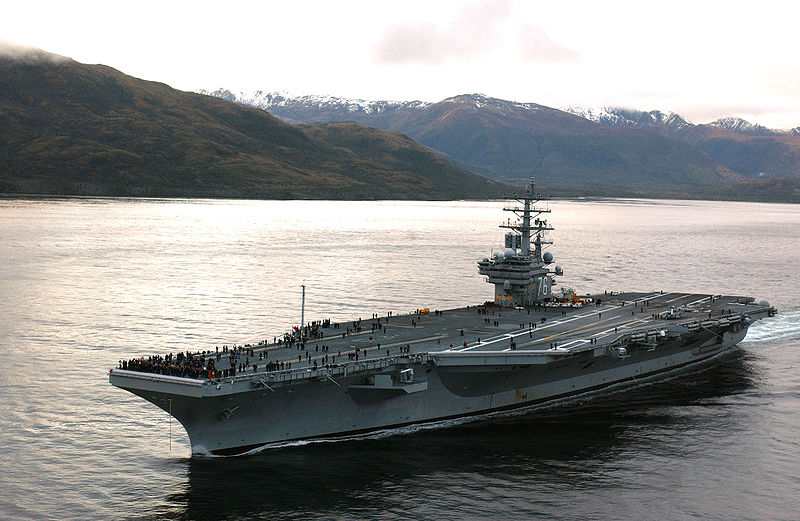Operation Tomodachi was a U.S. humanitarian aid mission to help Japan after the March 3, 2011 Fukushima disaster. Operation Tomodachi ran from March 12, 2011 to May 4, 2011. It included twenty four thousand U.S. servicemen, one hundred eighty nine aircraft and twenty four naval ships. The USS Ronald Reagan is a U.S. Navy Nimitz-class nuclear powered supercarrier that was involved in Operation Tomodachi. The Roosevelt was commissioned in October of 2003. It is over one thousand feet long and has accommodations for over five thousand personnel in the ship's crew and Air wing. The carrier was used as a refueling station for Japanese and U.S. helicopters involved in relief missions around Fukushima.
The U.S. Navy claims that "proactive measures" were taken in order to "mitigate the levels of Fukushima-related contamination on U.S. Navy ships and aircraft” and that crew members were not exposed to dangerous radiation levels. The Ronald Reagan had to move on March 14 to avoid a plume of radioactive emissions from the Fukushima power plant. Several contaminated helicopters landed on the carrier and a full radioactive decontamination procedure was carried out. The Ronald Reagan was anchored ten miles off Fukushima. It desalinates water for use by the crew. The ocean water and air around the Roosevelt was contaminated by radioactivity from the Fukushima disaster but the actual level of contamination was not revealed to the U.S. Navy until a month had passed. The crew had been drinking and washing in contaminated water during that month. They had been going into the ocean to rescue people that had been swept out to sea by the tsunami. They also repeatedly washed the deck of the carrier and aircraft with contaminated ocean water. The Navy gave out iodine pills to the officers and pilots but most of the crew did not get them.
The Navy established a registry for all personnel involved in Operation Tomodachi who may have been exposed to radiation. The registry was supposed to be completed in 2012. They say that only about one hundred and fifty people involved in the operation showed any sign of radioactive contamination but the Navy played down the seriousness of their exposure.
In December of 2012, nine crew members of the Ronald Reagan who had been involved in the decontamination of the deck filed suit against TEPCO, the Japanese company that operated the Fukushima power plant and the Japanese government, claiming that the rectal bleeding, gastrointestinal problems, hair loss, fatigue, thyroid cancers, testicular cancers, and leukemia that they are suffering were due to the failure of TEPCO to adequately warn the Navy of the dangers of contaminated ocean water. After the suit was filed, the Navy announced that it was dropping the registry after two years of work because it did not feel that there had been any serious exposure of the crew to radioactive materials.
An additional forty two crewmembers have joined the suit since it was filed and one hundred and fifty crewmembers are being medically screen and may also join the suit. The plaintiffs are seeking forty million dollars each and are asking for an additional billion dollars for a fund for other medical problems that may appear in the future.
A federal Judge in San Diego has just dismissed the lawsuit but left the door open to repeal. In the ruling, the judge said that it was beyond the authority of the judge to determine whether or not the Japanese government had perpetrated a fraud on the American government.
The USS Ronald Reagan:
